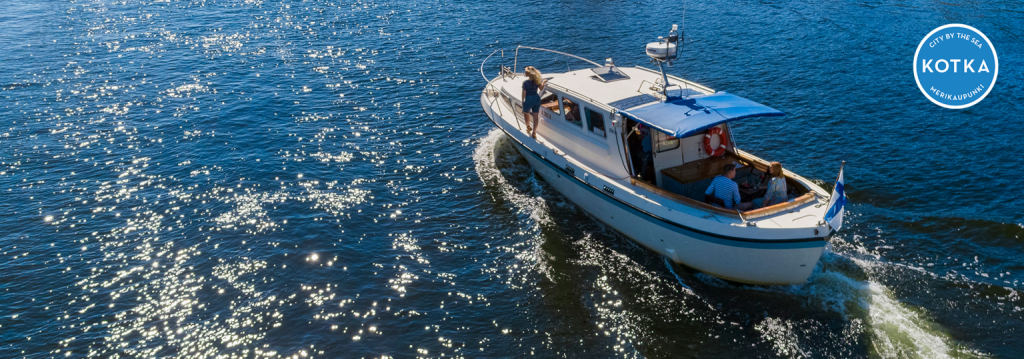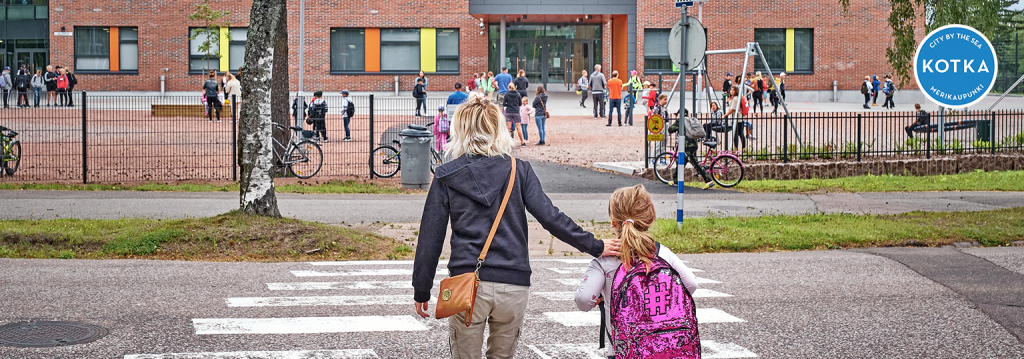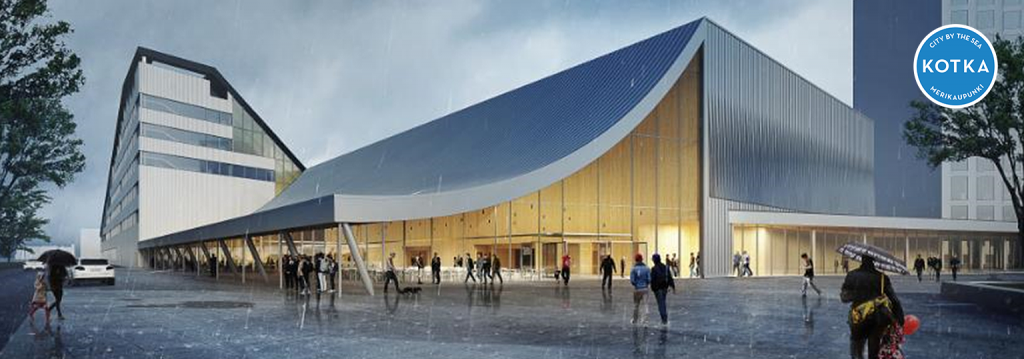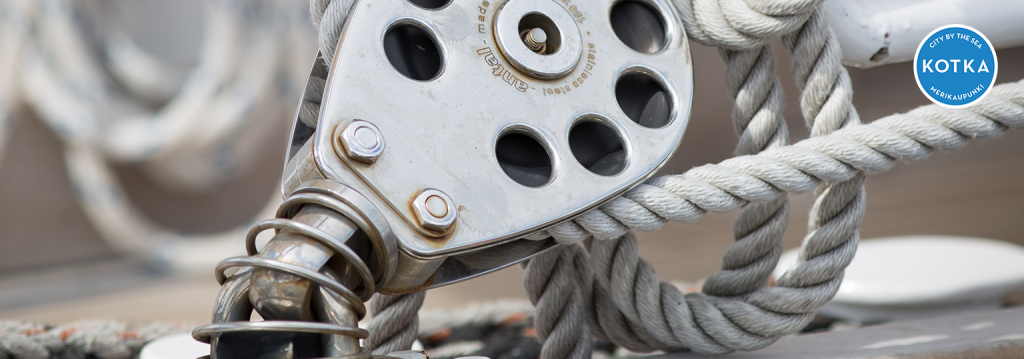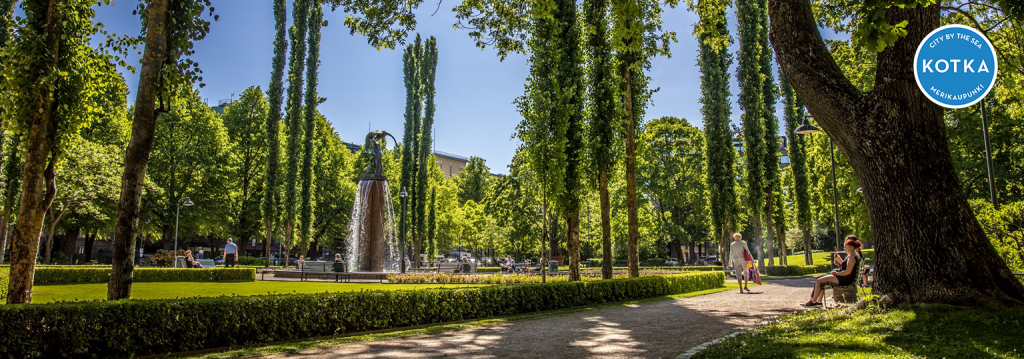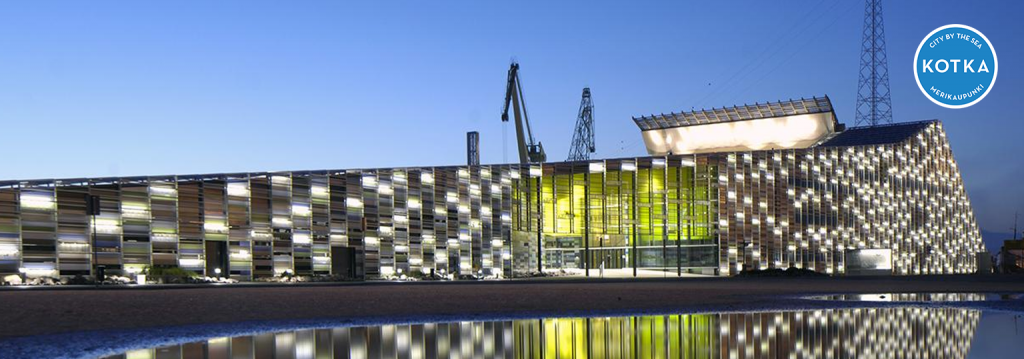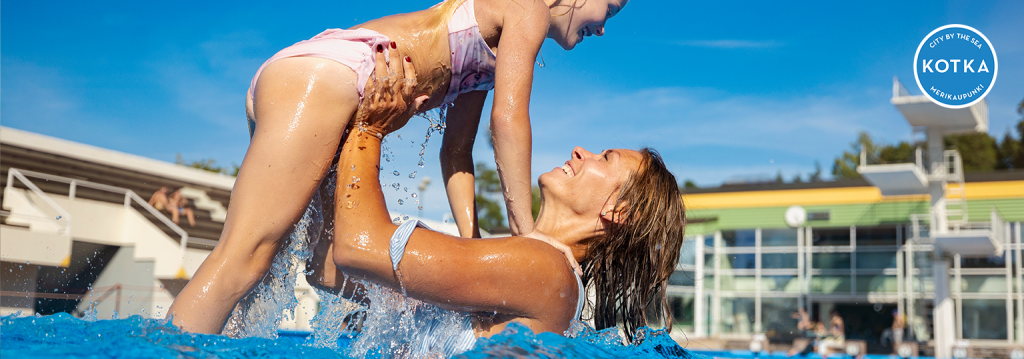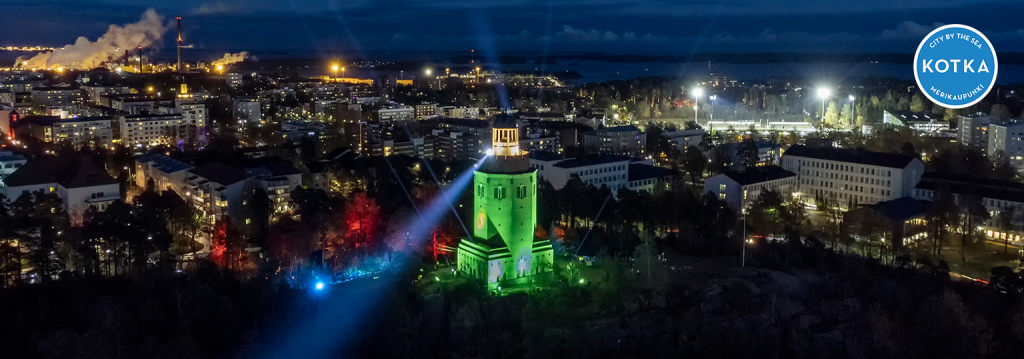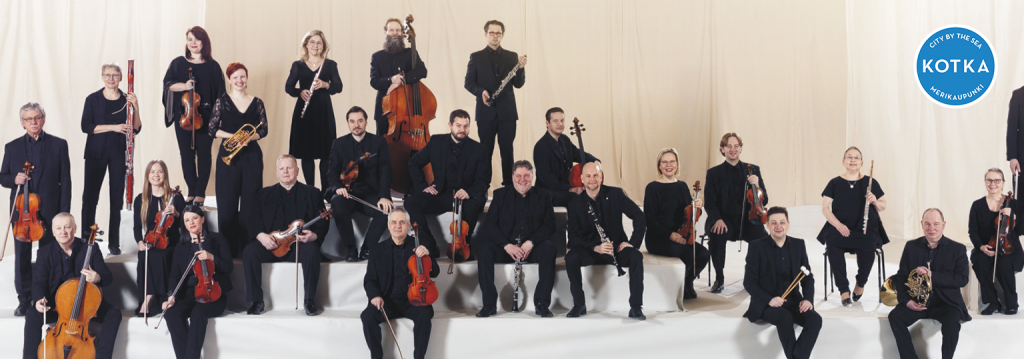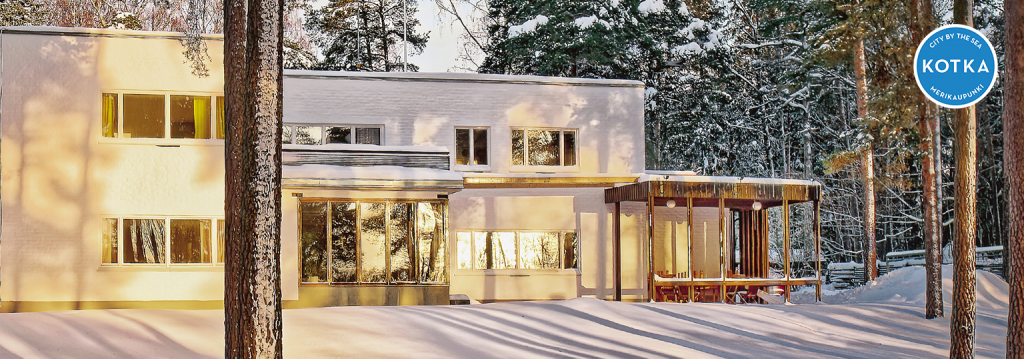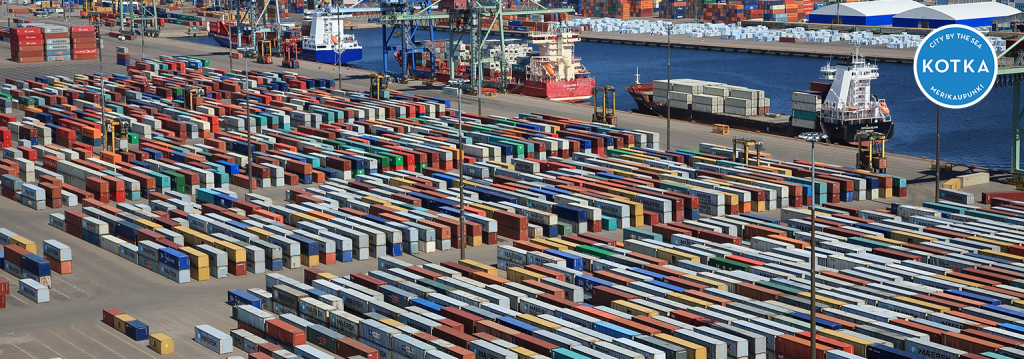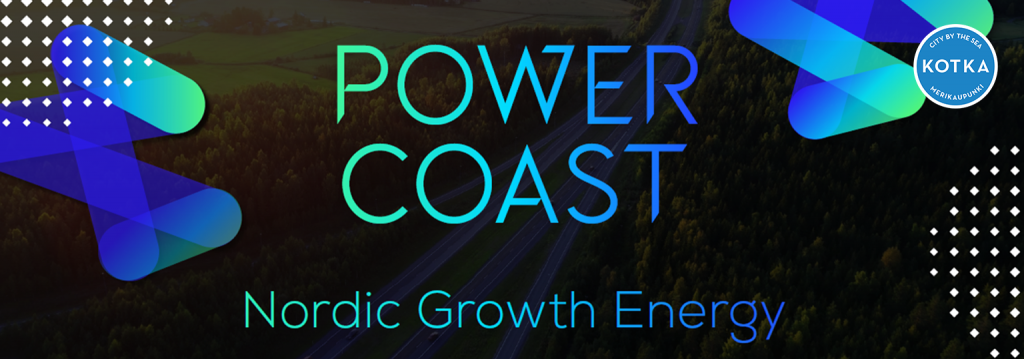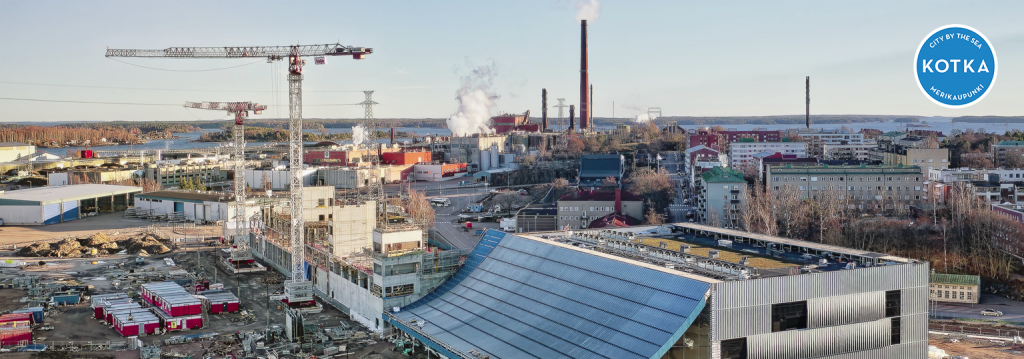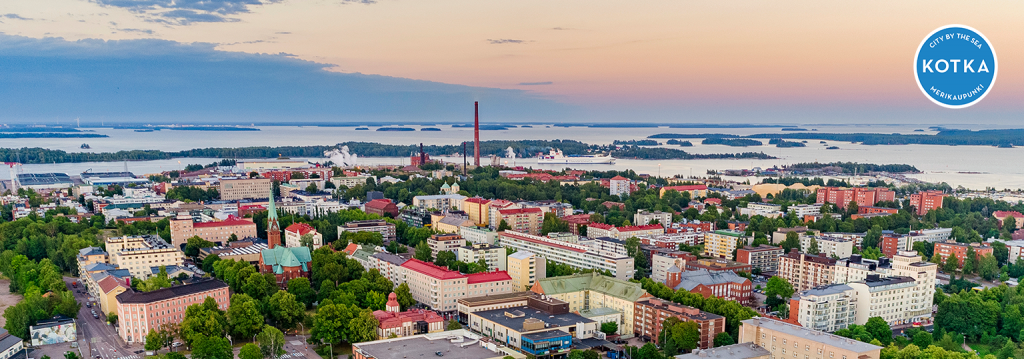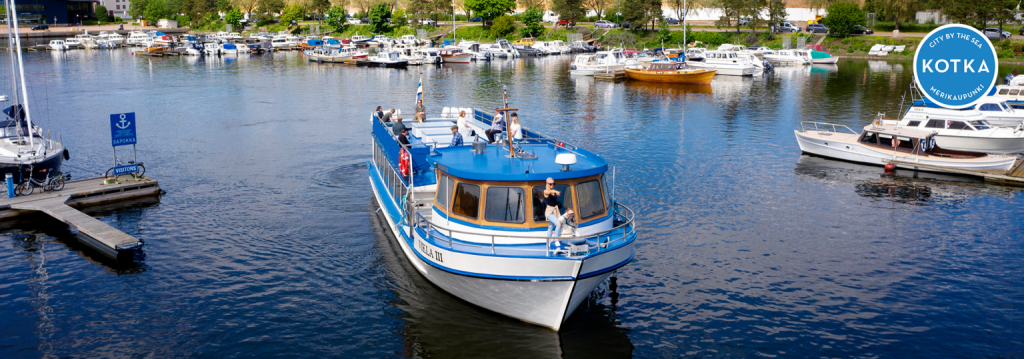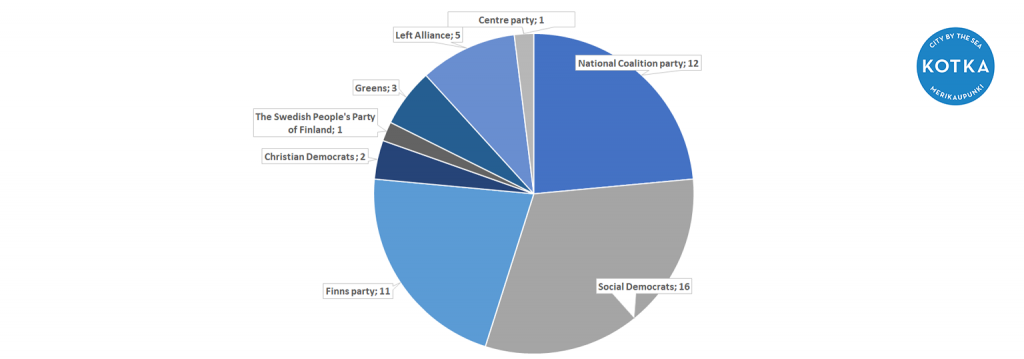Kotka – the city by the sea
Published 07.06.2023
Welcome to Kotka!
The city of Kotka is located in lush and wide river Kymijoki estuary, in magnificent archipelago of Gulf of Finland. Originally driver of sawmill industry, Kotka’s strategic location along waterways made it thriving commercial centre more than thousand years ago.
Kotka is culturally diverse city, offering wide range of events and activities. One of the oldest and prestigious events is Kotka Maritime Days, which has been celebrated since 1960s. Kotka, famous for its award-winning parks, is also known as city of music and center for Finnish jazz enthusiasts.
With rich history, unique attractions, breathtaking natural landscapes and diverse leisure activities, Kotka is one of the most attractive cities in Finland. Discover delights of this remarkable city and immerse yourself in unforgettable city experience!
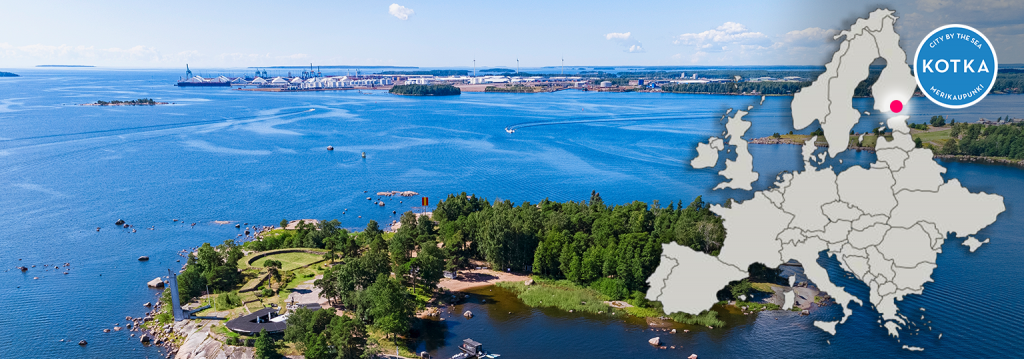
Location
• Driving time to Helsinki-Vantaa Airport 1 h 15 min (134 km)
• Driving time to Lappeenranta Airport 1,5 h (111 km)
• Driving time to Turku 3,5 h (295 km)
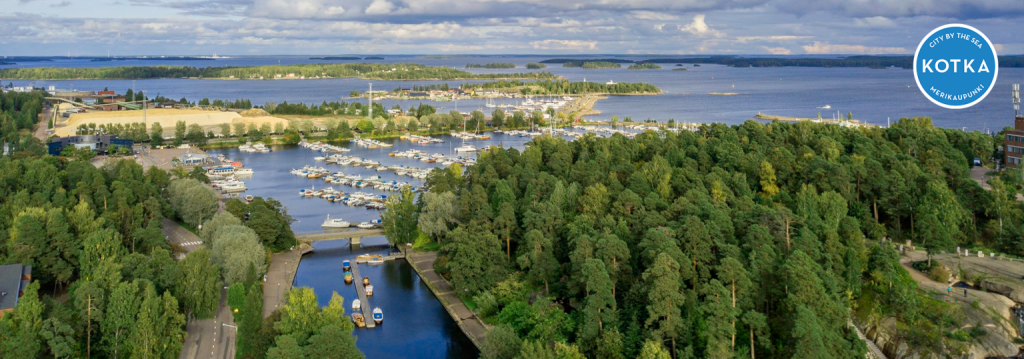 Basic information
Basic information
• Founded in 1879
• Two centers: Kotkansaari and Karhula
• Total area 950 km²
• Land area 271 km²
• Coastline 170 km
• 400 Islands
• Sea area 678 km²
• Nature: Gulf of Finland and River Kymijoki
Residents
• 50 640 Inhabitants (12/2022)
• 6 % Foreign origin
• More than 46 nationalities
Age structure 2021
• 0–14 v. 12,9 %
•15–64 v. 58,8 %
• + 65 v. 28,3 %
History of Kotka
In Kotka city area, there are Stone Age dwellings dating back to the Cambrian and Hammerhead cultures. The sea level was then about 20 metres higher than today and the present banks of the Kymijoki and Nummenjoki rivers in the Kotka area were marshes. There are also Bronze Age burial mounds and stone slabs in Kotka. Trading posts and harbors of the Viking Age are thought to have existed in the Kuutsalo, Kirkonmaa and Pirköyri islands. Trade connections on the northern coast of the Gulf of Finland became more active after the invasion of German merchants in the 1100s.
1200s Kymijoki river estuary began to be populated with settlements for trade and salmon and whitefish markets.
1293 The region around Kymijoki River was joined to Sweden after the construction of Vyborg Castle.
~1350 Kyminkartano (Kymmenegård) manor was built in the Kymijoki River estuary. It was an important farm and administrative center.
1555 King Gustav Vasa of Sweden made Kyminkartano a royal manor.
1500–1600s The Swedish Crown’s shipyard was established in Helilä, downstream from the Korkeakoski river branch.
1563 Kyminkartano built a water sawmill at Korkeakoski waterfall. It can be considered the forerunner of industry in the Karhula region.
1642 The parish of Kymi became independent from Suur-Vehkalahti and Pyhtää parishes.
1700–1721 The Swedish Empire came to its end with the Great Northern War.
1743 In Turku peace treaty the Swedish-Russian border was drawn into the Kymi River, and remained there until the beginning of Finland’s autonomy in 1809.
1789–1790 The sea battles of Ruotsinsalmi/Svensksund
1790s The Ruotsinsalmi-Kyminlinna double fortress was built in the Kymi area by order of the Russian Empress Catherine II.
1809–1917 Autonomy period in Finland
1853–1856 Crimean War. The British-French navy destroyed the largest of the naval forts and the city of Ruotsinsalmi.
Early 1870s The sawmill industry grew strongly, several steam sawmills were established at the estuary of the Kymi River.
1871 Timber began to be shipped from the old port of Kotka.
1872 Norwegian entrepreneur Hans Gutzeit established a sawmill at Kotkansaari. Almost a hundred Norwegian families moved to Kymi.
1878 The city of Kotka is founded on Kotka Island. The charter was published on 16 July 1879, when the City of Kotka was officially born.
1879 A storage warehouse and a storage wharf commissioned by the customs administration were completed in the port of Kantasatama (Kotka Old Port).
1811 The shoreline was straightened on both sides of storage wharf to facilitate the mooring of ships.
1868 The Vyborg Maritime School was established. Today it is a part of the South-Eastern Finland University of Applied Sciences (Xamk).
1890 The Kouvola-Kotka railway was completed. The railway, built as an extension of the Savonrata (Savo railway), reaches all the way to the quays of Kotka harbor.
1898–1910 Kotka was nicknamed the ”Savonian America” when a total of 770 people emigrated from Kotka across the ocean.
1902 William Ruth formed the Karhula Limited Company.
1908 The Kotka Workers’ Theatre was founded.
1917 Finland becomes an independent state.
1930 The Kotka Region Orchestra was established.
1934 Kotka City Hall was completed.
1936–1939 Alvar Aalto designed the Sunila pulp mill and residential area. Sunila is the architect’s most extensive work.
1951 The bustling industrial suburb of Kymi was transformed into the Karhula.
1962 The first Maritime Days were celebrated in Kotka’s Kantasatama
1963 The Kotka City Orchestra was established
1977 The Karhula trading district was annexed to Kotka together with the municipality of Kymi (total population 62 145).
1995 Finland joins the European Union
1999 Finland adopts the euro
1999 Kymi Sinfonietta was founded
2002 The Maretarium Aquarium House was completed
2006 Pasaati shopping centre completed
2008 Vellamo Marine Centre completed in Kantasatama
2014 E18 motorway completed
2020 New central hospital completed
2023 Kaakkois-Suomen Turvapuisto completed (a unique safety training environment in Kantasatama)
2023 Vt 15 Paimenportti -level crossing completed
2023 Event centre Satama Areena completed in Kantasatama
2024 Campus of the South-Eastern Finland University of Applied Sciences (XAMK) completed in Kantasatama
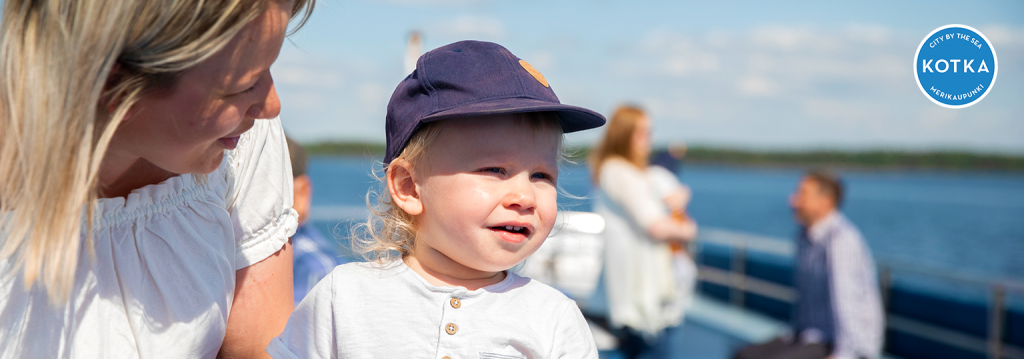
City Strategy 2030
Vision
Kotka – A Gateway to New Opportunities
Mission
We promote the well-being of all residents and the success of businesses in a socially, economically and ecologically sustainable way. Kotka is an international maritime and port city, attractive to migrants, new businesses and tourists.
Values
Fairness – Equal, sustainable and with an Kotka-like attitude
Courage – With enthusiasm, daring and renewal
Love – Caring for the region and its people, through joy!
Strategic goals
In Kotka, the strategic goals of the city strategy are called buoys. Buoys are goal formulas that contribute to achieving the vision and provide direction and boundaries for action. The Kotka 2030 Strategy has three buoys:
1. Learning and entrepreneurial Kotka – City of education, continuous learning and entrepreneurship
2. Kotka of Excellence – A city of first-class living, culture and events
3. Common Kotka – A city of sharing and good-humoured encounters a city of friendship and conviviality
Schools
Schools’ profiles emphasize internationalism, wellbeing, the maritime world and sport. Early childhood education is provided in Finnish, English and Russian and primary education in Finnish and English.
The Etelä-Kymenlaakso Sports Academy supports the training and study of those aiming for the top.
The South Kymenlaakso Vocational College Ekami and The South-Eastern Finland University of Applied Sciences Xamk, offer a wide range of international, welfare and maritime activities.
Xamk
The Kotka campus of South-East Finland University of Applied Sciences (XAMK) is home to around 2 900 future professionals and tradesmen in technology, social services and health. Research and development activities at Xamk are multidisciplinary and impressive.
The Kotka campus focuses, for example, on manageable, secure and user-friendly cybersecurity.
Xamk is also an educational pioneer in oil spill response.
Maritime Safety and Transport Research Centre Merikotka
• Multidisciplinary and applied research to improve maritime safety, prevent accidents and protect the marine environment
• Around 30 researchers from the University of Helsinki, Aalto University, the University of Turku and Xamk
• High level of project expertise
Park capital of the north
Kotka has the most award-winning parks and built green spaces in Finland. The sea, the archipelago and the Kymi River provide the setting for a wonderful mix of flowering green spaces, park art and active parks.
Parks: Kotka National Urban Park, Sapokka Water Garden, Isopuisto Park, Palotorninvuori Park, Herb garden Redoubt, Katariina Seaside Park, Sibelius Park, Koskipuisto Park, Sculpture Promenade, Fuksinpuisto Park, Toivo Pekkanen Park, Jokipuisto Park, Kumparepuisto Park, Pionipuisto Park
A city full of stories and things to experience
• Haukkavuori lookout tower
• The Imperial Fishing Lodge Langinkoski
• Kymi River
• Kotka and Kymi Churches and the Orthodox Church of St Nicholas
• Maritime Centre Vellamo
• Maretarium
• Satama Areena
• Southeast Finland Security Park
• Alvar Aalto’s Sunila
• Sea and archipelago
• Fishing and rafting
• Kotka’s evolving Kantasatama harbour
The city of active life
• Swimming pools in Katariina and Karhula
• Arto Tolsa Areena, football stadium
• Karhula central sports field
• Several sports halls
• Tennis hall
• Indoor shooting range
• Golf course
• Motor sports centre
• Riding school
• Bowling alley
• Two ice rinks
• Meriniemi Boating Centre
• Skate park
• Biathlon centre
• Over 50 km of fitness and ski trails
• Five grass pitches
• Three athletics fields
• Several public beaches
• Several outdoor recreation and camping areas and outdoor sports facilities
A city full of events
• Kotka Maritime Festival
• The Tall Ships’ Races (1992, 2007, 2017)
• Waves! Annual Light and Sound Festival
• Week of Love – Kotka Week
• Uuno Klami Composition Competition
• Kymijoen Lohisoitto Concert Week
• Kotka Day
• Kauppatori Monthly Market
• Laituri Reggae BBQ Party
• Kotka International Film Festival
• Summer Concerts in Sapokka Water Garden
• Kotka Pride
• Kymi River Day
• Children’s Cultural Weeks
• Dark River Festival
• Kotkan Organ Week
• Baltic Sea Day
• National Heritage Days 2023
• Hyväntuuli Well-being Fair 2023
• Alvar Aalto Week 2023
Cultural activities
• Kotka City Theatre
• Event Centre Satama Areena
• Kymi Sinfonietta Orchestra
• Maritime Centre Vellamo, ”Home of the museums”
• Art Galleries
• Repin Institute – Art Education Program
• Active libraries
Alvar Aalto and Sunila – a future Unesco site?
• Sunila pulp mill and housing community (1936–1954), the largest residential complex designed by Alvar Aalto
• Included in the national list of 13 “Aalto sites” nominated by UNESCO, Part of the Alvar Aalto Route
• “Cultural Route of the Council of Europe” certified in 2021, first in Finland
Port of HaminaKotka Ltd
• Finland’s largest general, export, container and transit port
• Traffic 16.27 million tonnes (2022)
• Connections to Europe, the Baltic Sea region and Asia
• 1100 hectares
• 10 port operators
• 12 liquid operators
• 200 companies
• 75 vessels per week
• Fairway depth 7,3-15,3 m
Powercoast
The cities of Kotka and Hamina, the regional development company Cursor and the companies and communities in the region are committed to creating and ensuring the success of battery industry and emerging battery cluster in the region.
Employment
• Workforce 21 545 (2021)
• 237 new businesses created in Kotka in 2021
• Employment rate 66,3 % (01/2023)
Largest employers (2021)
2618 Kymsote
1816 City of Kotka
576 Steveco Oy
375 Sulzer Pumps Finland Oy
376 MM Kotkamills Boards Oy
368 Kymen seudun osuuskauppa
297 Andritz Oy
Decision making
The decision-making power of the municipality is exercised by the city council. The City council decides on the long-term objectives of the municipality’s activities and finances in its municipal strategy. Councillors and deputy councillors are elected every four years in municipal elections. Citizens can participate and influence the city’s affairs by voting in these municipal elections. They can also take initiatives, answer questions, take part in debates and give feedback to officials.
Influence and participation
Welcome to make a difference, it is the right of every Kotka citizen!
The City strategy of Kotka has set out a strategic focus on a Common Kotka, a city of doing things together and full of joyfull encounters. A common Kotka inspires action and supports the well-being of all. Effective opportunities for participation and influence play an important role in promoting well-being in Kotka.
The aim is that
• it is easy for residents to participate and take action on their own initiative
• the urban environment supports a sense of community
• lively and open dialogue between decision-makers, officials and residents
There are several measures to achieve these objectives, such as participatory budgeting. We are constantly looking for new ways to involve citizens in the life of their city.
Political parties 2021–2025
City council and City Board
Chairman of the City Council, Mr. Pasi Hirvonen (NCP)
1st vice-chairman, Mr. Jukka Lopperi (SDP)
2nd Vice-Chair, Mr. Olli Kekkonen (FP)
3rd Vice-Chair, Ms. Eeva-Liisa Frilander-Paavilainen (SDP)
Chairman of the Board, Mr. Sami Virtanen (SDP),
1st Vice-Chairman, Mr. Jouko Rauhala (NCP)
2nd Vice-Chair, Mr. Jani Paananen (FP)
Find out more about Kotka and the Kotka region on visitkotkahamina!
Please note! This page is machine translated. We apologise for any errors, please report any mistakes viestinta@kotka.fi.
